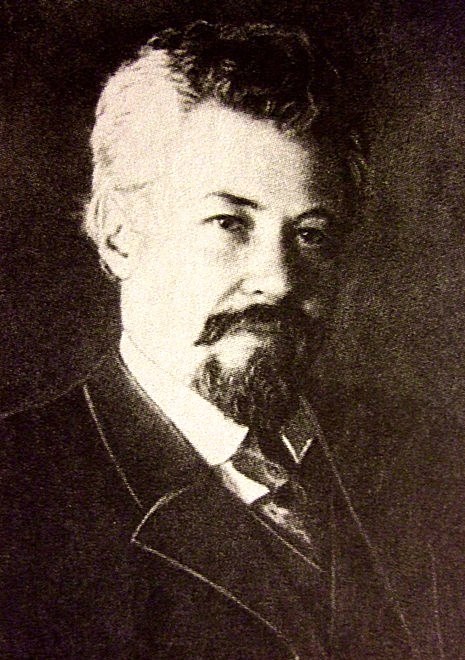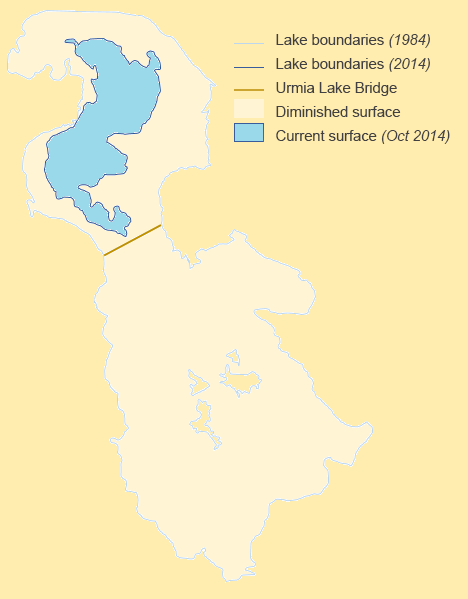|
Caucasian Front Electoral District (Russian Constituent Assembly Election, 1917)
The Caucasian Front electoral district (russian: избирательном округе Кавказского фронта) was a constituency created for the 1917 Russian Constituent Assembly election. The electoral district covered the Caucasian Front of the Russian Army. Moreover, it included the Urmia- Van Flotilla. The Socialist-Revolutionaries dominated the soldiers soviets in the Caucasian Front. They used their dominance of the soviets to campaign for national defence and against the Bolsheviks' 'peace now' line. In several locations, the SRs excluded the Bolsheviks from local electoral committees. However, whilst the Caucasian Front soldiers supported the defencists line of the SR in the election, they nevertheless 'voted with their feet' and deserted the army ''en masse''. Results The SRs won a landslide victory in the constituency. The Soviet historian L. M. Spirin's account of the election result only gives a rough estimate, with 360,000 votes for the Socialist-Revo ... [...More Info...] [...Related Items...] OR: [Wikipedia] [Google] [Baidu] |
1917 Russian Constituent Assembly Election
Elections to the Russian Constituent Assembly were held on 25 November 1917, although some districts had polling on alternate days, around two months after they were originally meant to occur, having been organized as a result of events in the February Revolution. They are generally recognised to be the first free elections in Russian history. Various academic studies have given alternative results. However, all clearly indicate that the Bolsheviks were clear winners in the urban centres, and also took around two-thirds of the votes of soldiers on the Western Front. Nevertheless, the Socialist-Revolutionary party topped the polls, winning a plurality of seats (no party won a majority) on the strength of support from the country's rural peasantry, who were for the most part one-issue voters, that issue being land reform. The elections, however, did not produce a democratically-elected government. The Constituent Assembly only met for a single day the following January before being ... [...More Info...] [...Related Items...] OR: [Wikipedia] [Google] [Baidu] |
Caucasus Front (Russian Empire)
The Caucasus Front (russian: Кавказский фронт) was a major formation of the army of the Russian Republic (the successor to the Imperial Russian Army) during the First World War. It was established in April 1917 by reorganization of the Russian Caucasus Army and formally ceased to exist in March 1918. Creation The reorganization of the Caucasus Army into the Caucasus Front was undertaken by the Russian Provisional Government as part of the military reforms following the February Revolution. During its entire year of existence, the Front was in a process of disintegration as revolutionary propaganda, the weakening of military discipline, desertion, and disease sapped the Front's strength. General Yudenich was the commander of the Front at its creation. On May 31, 1917, he was removed for refusing to obey the Provisional Government's orders to resume offensive operations against the Turks, and was replaced by General Przhevalsky. Composition * Caucasus Army **5 ... [...More Info...] [...Related Items...] OR: [Wikipedia] [Google] [Baidu] |
Lake Urmia
Lake Urmia; az, اۇرمۇ گؤلۆ, script=Arab, italic=no, Urmu gölü; ku, گۆلائوو رمیەیێ, Gola Ûrmiyeyê; hy, Ուրմիա լիճ, Urmia lich; arc, ܝܡܬܐ ܕܐܘܪܡܝܐ is an endorheic salt lake in Iran. The lake is located between the provinces of East Azerbaijan and West Azerbaijan in Iran, and west of the southern portion of the Caspian Sea. At its greatest extent, it was the largest lake in the Middle East and the sixth-largest saltwater lake on Earth, with a surface area of approximately , a length of , a width of , and a maximum depth of . By late 2017, the lake had shrunk to 10% of its former size (and 1/60 of water volume in 1998) due to persistent general drought in Iran, but also the damming of the local rivers that flow into it, and the pumping of groundwater from the surrounding area. This dry spell was broken in 2019 and the lake is now filling up once again, due to both increased rain and water diversion from the Zab River by the Lake ... [...More Info...] [...Related Items...] OR: [Wikipedia] [Google] [Baidu] |
Lake Van
Lake Van ( tr, Van Gölü; hy, Վանա լիճ, translit=Vana lič̣; ku, Gola Wanê) is the largest lake in Turkey. It lies in the far east of Turkey, in the provinces of Van and Bitlis in the Armenian highlands. It is a saline soda lake, receiving water from many small streams that descend from the surrounding mountains. It is one of the world's few endorheic lakes (a lake having no outlet) of size greater than and has 38% of the country's surface water (including rivers). A volcanic eruption blocked its original outlet in prehistoric times. It is situated at above sea level. Despite the high altitude and winter highs below , high salinity usually prevents it from freezing; the shallow northern section can freeze, but rarely. Hydrology and chemistry Lake Van is across at its widest point. It averages deep. Its greatest known depth is . The surface lies above sea level and the shore length is . It covers and contains (has volume of) . The western portion of the ... [...More Info...] [...Related Items...] OR: [Wikipedia] [Google] [Baidu] |
Socialist-Revolutionaries
The Socialist Revolutionary Party, or the Party of Socialist-Revolutionaries (the SRs, , or Esers, russian: эсеры, translit=esery, label=none; russian: Партия социалистов-революционеров, ), was a major political party in late Imperial Russia, and both phases of the Russian Revolution and early Soviet Russia. The SRs were agrarian socialists and supporters of a democratic socialist Russian republic. The ideological heirs of the Narodniks, the SRs won a mass following among the Russian peasantry by endorsing the overthrow of the Tsar and the redistribution of land to the peasants. The SRs boycotted the elections to the First Duma following the Revolution of 1905 alongside the Russian Social Democratic Labour Party, but chose to run in the elections to the Second Duma and received the majority of the few seats allotted to the peasantry. Following the 1907 coup, the SRs boycotted all subsequent Dumas until the fall of the Tsar in the February ... [...More Info...] [...Related Items...] OR: [Wikipedia] [Google] [Baidu] |
Soviet (council)
Soviets (singular: soviet; rus, сове́т, sovét, , literally "council" in English) were Political organisation, political organizations and governmental bodies of the former Russian Empire, primarily associated with the Russian Revolution, which gave the name to the latter state of the Soviet Union. Soviets were the main form of government in the Russian Soviet Federative Socialist Republic, Russian SFSR, Makhnovshchina, Free Territory, and to a much lesser extent were active in the Russian Provisional Government. It also can mean any workers' council that is Socialism, socialist such as the Irish soviets. Soviets do not inherently need to adhere to the ideology of the later Soviet Union. Etymology "Soviet" is derived from a Russian language, Russian word meaning council, assembly, advice, harmony, or concord, uk, рада (''rada''); pl, rada; be, савет; uz, совет; kk, совет/кеңес; ka, საბჭო; az, совет; lt, taryba; ro, soviet (Mo ... [...More Info...] [...Related Items...] OR: [Wikipedia] [Google] [Baidu] |
Oliver Henry Radkey
Oliver Henry Radkey Jr. (July 12, 1909–July 21, 2000) was an American historian of Russian and Soviet history. He was a professor of Russian history at the University of Texas at Austin. Radkey received his degree from the University of Texas. Later he attended Harvard University, where he was influenced by Sidney Bradshaw Fay. Radkey went on a traveling fellowship through Central Europe and Russia until he returned to the United States aboard the SS ''Normandie''. He married Jakoba Balt in 1936. He studied at Stanford University and taught at the University of Cincinnati before moving to the University of Texas. Works *''The Election to the Russian Constituent Assembly of 1917''. Harvard University Press, 1950. *''The Agrarian Foes of Bolshevism: Promise and Default of the Russian Socialist Revolutionaries, February to October 1917''. 1958. (Radkey's doctoral dissertation) *''The Sickle Under the Hammer: The Russian Socialist Revolutionaries in the Early Months of Soviet ... [...More Info...] [...Related Items...] OR: [Wikipedia] [Google] [Baidu] |
Erzerum
Erzurum (; ) is a city in eastern Anatolia, Turkey. It is the largest city and capital of Erzurum Province and is 1,900 meters (6,233 feet) above sea level. Erzurum had a population of 367,250 in 2010. The city uses the double-headed eagle as its coat-of-arms, a motif that has been a common symbol throughout Anatolia since the Bronze Age. Erzurum has winter sports facilities and hosted the 2011 Winter Universiade. Name and etymology The city was originally known in Armenian as Karno K'aghak' ( hy, Կարնոյ քաղաք), meaning city of Karin, to distinguish it from the district of Karin ( Կարին). It is presumed its name was derived from a local tribe called the Karenitis. Darbinian, M. "Erzurum," Armenian Soviet Encyclopedia. Yerevan: Armenian Academy of Sciences, 1978, vol. 4, p. 93. An alternate theory contends that a local princely family, the Kamsarakans, the Armenian off-shoot of the Iranian Kārin Pahlav family, lent its name to the locale that eventually beca ... [...More Info...] [...Related Items...] OR: [Wikipedia] [Google] [Baidu] |





